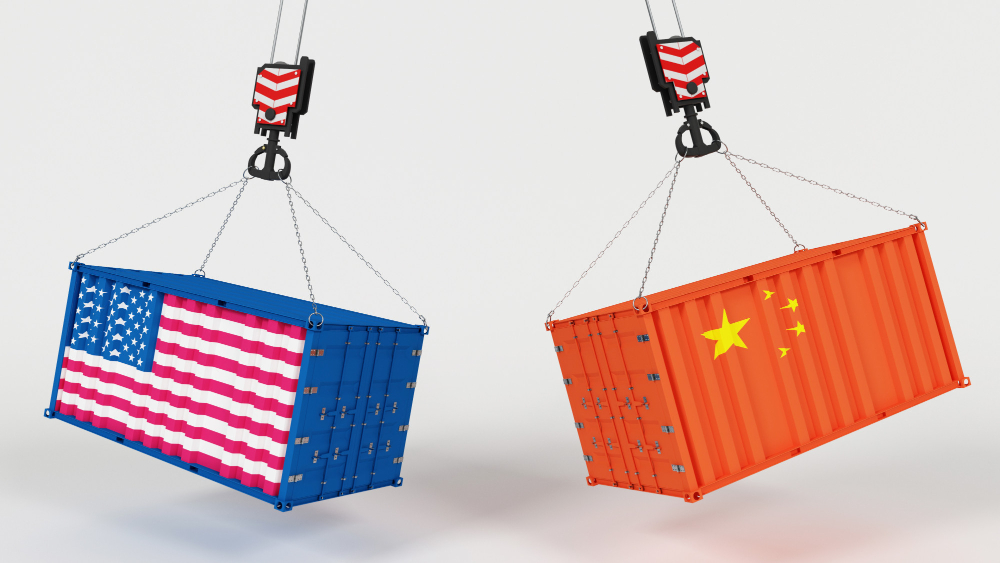Exploring the Dynamics of China Trade: A Comprehensive Guide
Category: Chinese chance Date: 2024-09-27 Views: 2
China boasts a rich trading history that spans thousands of years. The ancient Silk Roads, a network of trade routes, played a pivotal role in connecting China with the rest of the world, facilitating the exchange of goods, ideas, and cultures. This historical trade route had a profound impact on the global economy and international relations, shaping the course of global commerce.
In modern times, China has emerged as a dominant force in global trade, with its trade activities exerting significant influence on the global economy. The country's trade history is a testament to its ability to adapt and evolve, transitioning from traditional trading routes to modern global commerce. The impact of China's trade history is palpable in its shaping of the global economy.
The ancient Silk Roads facilitated the exchange of goods such as silk, spices, and precious metals, which had a profound impact on the economies of participating countries. Today, China remains a major player in international trade, influencing global economic trends. The historical significance of China's trade is evident in its influence on global trade patterns and economic development.
As such, understanding the history of China's trade is essential for gaining insights into its current role in the global economy.

The Impact of China Trade on Global Economy: Trends and Analysis
China's trade activities have had a significant impact on the global economy, shaping trends and influencing economic dynamics. The country's rapid industrialization and export-oriented growth strategy have made it a major player in international trade. China's trade surplus with many countries has led to debates about its impact on global economic stability.
The country's trade activities have also contributed to the rise of global supply chains, with many multinational companies relying on Chinese manufacturing for their products. This has led to concerns about the vulnerability of these supply chains to disruptions and geopolitical tensions. The impact of China's trade on the global economy can also be seen in its role as a major consumer market.
The country's growing middle class and increasing consumer spending have made it an attractive market for foreign companies. This has led to increased competition and opportunities for businesses looking to expand into China. Additionally, China's trade activities have also influenced global commodity prices, particularly in sectors such as energy and agriculture.
The country's demand for raw materials and energy resources has had a significant impact on global commodity markets. Overall, the impact of China's trade on the global economy is multifaceted, with both positive and negative implications for various stakeholders. Understanding these trends and analyzing their implications is crucial for navigating the complexities of China trade.
Understanding China's Trade Policies and Regulations: A Closer Look
China's trade policies and regulations play a crucial role in shaping its trade dynamics and influencing international trade relations. The country has implemented various policies to promote its export-oriented growth strategy and protect its domestic industries. This includes measures such as export subsidies, import tariffs, and non-tariff barriers.
Additionally, China has also been actively involved in regional and bilateral trade agreements, further shaping its trade relations with other countries. Understanding China's trade policies and regulations is essential for businesses looking to engage in trade with the country, as they can have a significant impact on market access and business operations. China's trade policies and regulations also reflect its broader economic and political objectives.
The country has been actively pursuing initiatives such as the Belt and Road Initiative (BRI) to expand its influence in global trade and investment. This has led to increased cooperation with countries along the BRI routes, as well as efforts to establish new trade corridors and infrastructure projects. Additionally, China's trade policies are also influenced by its geopolitical ambitions, with the country seeking to assert its influence in international trade relations.
As such, understanding China's trade policies and regulations requires a comprehensive analysis of its economic, political, and strategic objectives.
Exploring China's Key Trading Partners and Industries: Opportunities and Challenges
China has established itself as a major trading partner for many countries around the world, with its trade activities spanning various industries and sectors. The country's key trading partners include major economies such as the United States, European Union, and ASEAN countries. These partnerships have led to significant opportunities for businesses looking to engage in trade with China, as well as challenges related to market access and competition.
Additionally, China's trade activities are not limited to specific industries, with the country being involved in sectors such as manufacturing, technology, agriculture, and services. Understanding China's key trading partners and industries is crucial for identifying potential opportunities and challenges for businesses looking to engage in trade with the country. China's key trading partners also reflect its broader economic and geopolitical objectives.
The country has been actively seeking to diversify its trading relationships and reduce its reliance on specific markets. This has led to increased efforts to engage with emerging economies and establish new trade partnerships. Additionally, China's involvement in various industries reflects its efforts to upgrade its manufacturing capabilities and promote innovation-driven growth.
This has led to increased competition in sectors such as technology and advanced manufacturing, as well as opportunities for collaboration and investment. Overall, exploring China's key trading partners and industries provides valuable insights into the opportunities and challenges associated with engaging in trade with the country.
The Role of Technology in China Trade: E-commerce, Innovation, and Digital Transformation
Technology has played a crucial role in shaping China's trade dynamics, with e-commerce, innovation, and digital transformation driving significant changes in the country's trade activities. China has emerged as a global leader in e-commerce, with platforms such as Alibaba and JD.com revolutionizing the way goods are bought and sold. This has led to increased opportunities for businesses looking to engage in online commerce with China, as well as challenges related to market access and competition.
Additionally, China's focus on innovation-driven growth has led to increased investment in research and development, as well as efforts to promote technological advancements in various industries. The role of technology in China trade is also evident in the country's digital transformation efforts. China has been actively pursuing initiatives such as the Digital Silk Road to promote digital connectivity and cooperation with other countries.
This has led to increased opportunities for businesses looking to engage in digital trade with China, as well as challenges related to data privacy and cybersecurity. Additionally, technology has also played a crucial role in shaping China's trade relations with other countries, with digital platforms facilitating cross-border transactions and communication. Overall, understanding the role of technology in China trade is essential for businesses looking to navigate the complexities of digital commerce and innovation-driven growth.
Navigating the Complexities of China Trade: Tips for Successful Business Operations
Navigating the complexities of China trade requires a comprehensive understanding of its market dynamics, regulatory environment, and cultural nuances. Businesses looking to engage in trade with China should conduct thorough market research and due diligence to identify potential opportunities and challenges. This includes understanding consumer preferences, market trends, and competitive landscape.
Additionally, businesses should also familiarize themselves with China's trade policies and regulations to ensure compliance and mitigate risks related to market access and business operations. Successful business operations in China also require building strong relationships with local partners and stakeholders. This includes establishing trust-based partnerships, understanding cultural norms, and adapting business strategies to local market conditions.
Additionally, businesses should also leverage technology and innovation to enhance their competitiveness in the Chinese market. This includes investing in digital capabilities, promoting technological advancements, and embracing e-commerce opportunities. Overall, navigating the complexities of China trade requires a strategic approach that takes into account market dynamics, regulatory environment, cultural nuances, and technological advancements.
The Future of China Trade: Emerging Trends and Potential Opportunities for Growth
The future of China trade is characterized by emerging trends and potential opportunities for growth that are shaping the country's role in the global economy. China's continued focus on innovation-driven growth is expected to drive significant changes in its trade activities, with increased investment in research and development leading to new opportunities for businesses looking to engage in trade with the country. Additionally, China's efforts to diversify its trading relationships are expected to lead to new partnerships with emerging economies and increased cooperation with countries along the BRI routes.
The future of China trade also presents potential opportunities for businesses looking to engage in digital commerce with the country. The rapid growth of e-commerce platforms and digital connectivity initiatives is expected to create new opportunities for cross-border transactions and communication. Additionally, China's focus on promoting sustainable development is expected to lead to new opportunities for businesses looking to engage in environmentally friendly practices and green technologies.
Overall, the future of China trade is characterized by emerging trends that present potential opportunities for growth across various industries and sectors. In conclusion, exploring the dynamics of China trade provides valuable insights into its historical significance, impact on the global economy, policies and regulations, key trading partners and industries, role of technology, tips for successful business operations, and future trends. Understanding these dynamics is essential for businesses looking to engage in trade with China, as it provides valuable insights into market opportunities and challenges.
As such, a comprehensive understanding of China trade dynamics is crucial for navigating the complexities of international commerce and fostering successful business operations in one of the world's largest economies.

